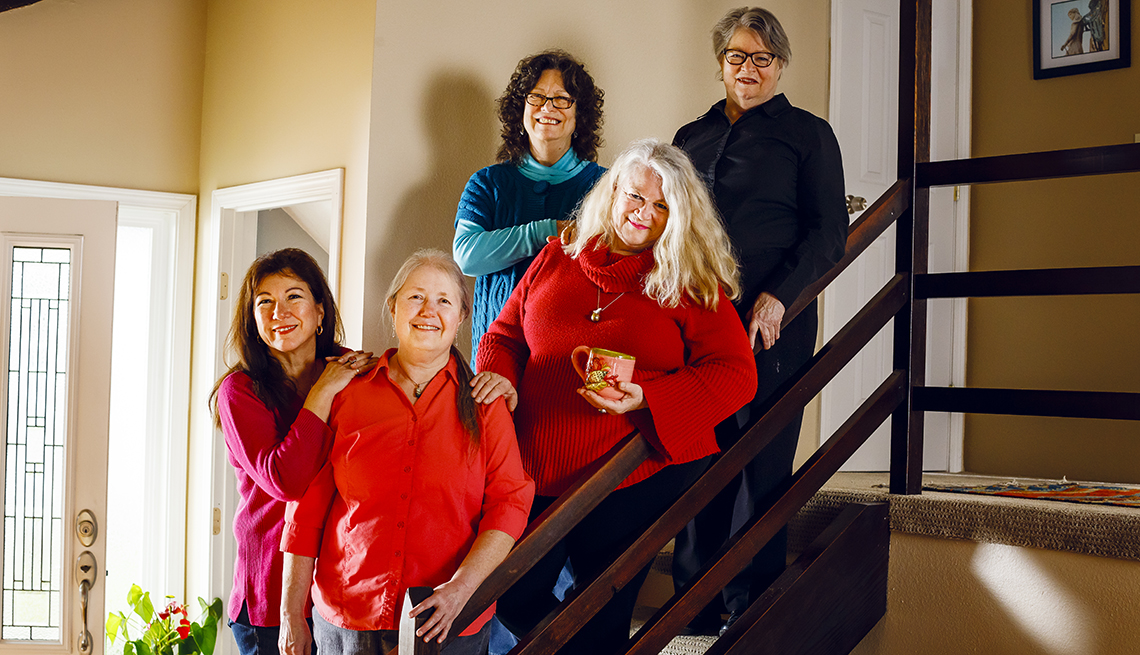
- Select a language for the TTS:
- UK English Female
- UK English Male
- US English Female
- US English Male
- Australian Female
- Australian Male
- Language selected: (auto detect) - EN
Play all audios:
CHOOSE WISELY From left: Deborah Knox and Sharon Kha Kendrick Brinson Four years ago, after her husband died, Margaret McMullan began looking for a tenant to share her three-bedroom home
near Montpelier, Vt. McMullan, now 79, could not afford to pay her bills on her small state pension and Social Security income. Home Share Now paired her with a retired man who had relocated
from Texas. The relationship soured fast. “He was obviously used to being in charge,” says McMullan, who likes to keep busy in her retirement with quilting groups and a wide circle of
friends. By contrast, her new housemate rarely left the house. “He just was home all day, and was somebody with a lot of presence,” she says. He didn’t do the agreed-upon chores, like mow
the lawn or lift heavy items. By the end of the two-week trial period — part of the Home Share Now process — McMullan suspected that the relationship might not work, but ignored her
instincts. “I thought I could handle him,” she says. A month later, she told him to leave. But he refused. It took another two months, with help from Home Share Now staff, to get him out.
When McMullan was ready to try again, she found the right fit in Brian Remer, 60, who was commuting to a new job two hours away from home; he needed a place to stay in Montpelier just four
nights a week. For $400 in monthly rent, Remer gets a bedroom, sitting room and private bath. But he also shovels light snow, mows the lawn, lifts heavy items, cooks twice a week and
provides some companionship. “We sometimes sit at the table chatting until 10 o’clock at night, talking about life,” McMullan says. EXTREME COHABITATION Shared housing often means moving
into someone else’s established home and agreeing to live by their rules. When Christine Bowdish, a real estate broker in Portland, Ore., bought an eight-bedroom house in a Portland suburb
last year, she saw a way to change that equation. She wouldn’t live there herself, but instead rent the rooms to women like her — singles 55 and up. “We just want to survive and live out
life to the fullest and be with our friends and our family,” says Bowdish, 62. “How do we do that?” She began filling the house last spring. By the beginning of this year, all but three
rooms were rented. The tenants make house rules and decide collectively who gets to join the community. Linda Simmons-Wilfert, 67, a retired bookkeeper, was the first to move in. She had met
Bowdish at a Let’s Share Housing meetup. Bowdish invited her to see the house, and it was there, while sitting on the porch sipping tea, that Simmons-Wilfert had an epiphany. “She’s telling
me what she sees and what she wants and her vision,” Simmons-Wilfert says, recalling lilacs blooming in the garden. “And immediately I thought, _This is absolutely my place. This is where I
need to be_. “If you had asked me even a year ago if I would ever live in a house with more than two women, I’d say, ‘Absolutely not! Are you nuts?’” she says. Instead, she’s discovered
that she can live comfortably with a half dozen. “We get to explore what and who we are now at this stage in life.” At monthly meetings, they discuss problems and concerns. Rather than
assign chores, the women do the ones they like best. So far, it works.






